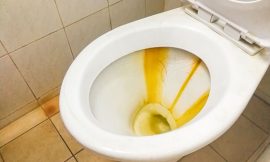
Have you ever opened your front-loading washing machine only to be hit by a musty odor? You’re not alone! Studies show that around 60% of front-load washer users experience mold issues at some point. Mold not only produces unpleasant smells but can also affect the cleanliness of your laundry. Fortunately, cleaning mold from your machine is not only essential but also easier than you might think! In this guide, we’ll explore the causes of mold buildup and provide step-by-step methods to help you get your washer back in shape. Let’s dive into the world of fresh-smelling laundry!
Understanding the Causes of Mold in Front-Loading Washing Machines
Mold growth in front-loading washing machines can often be traced back to a few primary factors. The design of these machines, with their airtight seals and efficient water usage, can create a moist environment that is perfect for mold to thrive. When clothes are left inside for too long, combined with the residual moisture from the washing process, it sets the stage for mold to flourish.
Speaking of moisture, humidity levels play a crucial role in this scenario. High humidity conditions can lead to excessive moisture not only in the air but also within the washing machine itself. On particularly damp days, even a brief period of closed doors can result in increased humidity levels, further encouraging mold growth.
You may find mold accumulating in certain areas of your washing machine, particularly where water tends to collect. Common hotspots include the rubber door seals, detergent dispensers, and even inside the drum. Being aware of these areas can help you take proactive measures to keep your machine clean.
Preparing to Clean Your Washing Machine
Before diving into the cleaning process, it’s important to gather the right tools and supplies. You’ll need rubber gloves, a scrub brush, a microfiber cloth, and some cleaning products. If you're opting for a natural approach, vinegar and baking soda will come in handy.
Safety should always be a priority. Make sure to work in a well-ventilated area and consider wearing a mask if you're sensitive to mold spores. It's also wise to unplug the machine before starting the cleaning process to avoid any accidents.
When it comes to cleaning products, you have several options. If you prefer natural solutions, white vinegar and baking soda are fantastic because they are both effective and non-toxic. Alternatively, there are commercial cleaning products specifically designed for mold removal in washing machines. Just be sure to follow the instructions carefully.
Step-by-Step Guide to Cleaning Mold from Your Washer
Cleaning the drum of your washing machine can be straightforward if you follow these steps. Start by running a hot cycle with an empty drum, adding two cups of white vinegar. This helps eliminate any mold and odors. After the cycle, scrub any visible mold in the drum with a scrub brush and a mixture of vinegar and baking soda.
Next, focus on the rubber door seal. Mold loves to hide in the creases, so pull back the seal gently and wipe it down with a cloth soaked in a vinegar solution. For tougher spots, a soft brush can help dislodge debris.
Don’t forget the detergent dispenser. Remove it if possible, and rinse it under hot water. Use a scrubbing pad and a mixture of vinegar and baking soda again to get rid of any buildup. Finally, check the filter at the bottom of the machine, as it can collect debris and mold. Rinse it thoroughly and replace it.
Effective Cleaning Solutions: Natural and Commercial Options
There are two primary categories when it comes to cleaning solutions: natural and commercial. Natural cleaning solutions, such as vinegar and baking soda, are effective at breaking down mold and mildew due to their acidic nature. They’re safe to handle and won’t introduce harsh chemicals into your home environment. However, they may require more frequent applications to maintain cleanliness.
On the other hand, commercial mold removers can be a faster solution, specifically designed to tackle mold and mildew issues. Many of these products are highly effective and come with easy-to-follow instructions. However, be aware of the potential risks of harsh chemicals and ensure you’re using them in a well-ventilated space.
It’s essential to weigh the pros and cons of each method based on your cleaning needs, preferences, and any allergies or sensitivities you or your family may have.
Preventing Mold Buildup in the Future
To avoid future mold issues, establishing a routine maintenance program is key. Regularly cleaning your washing machine every month can go a long way in keeping mold at bay. After each wash, it's a good idea to leave the door ajar for a while to allow airflow, which will help dry out any residual moisture inside.
Using the right detergents and fabric softeners also makes a difference. Opt for high-efficiency (HE) detergents that are formulated for front-loading machines, and try to avoid over-filling the detergent dispenser, as excess soap can create buildup and moisture.
When to Call a Professional
While many mold issues can be handled at home, there are signs that indicate a deeper issue with mold that may require professional help. If you notice a persistent musty smell, visible mold growth that you can’t seem to remove, or if your clothes start coming out of the wash with a moldy odor, it’s time to call in an expert.
During a professional cleaning, you can expect thorough inspections, specialized equipment, and treatments that go beyond standard cleaning methods. Make sure to choose a reliable service provider with good reviews and a reputation for effectively addressing mold issues in washing machines.
Conclusion
In conclusion, keeping your front-loading washing machine mold-free doesn’t have to be a daunting task. By understanding the causes, preparing adequately, and following the proper cleaning procedures, you can ensure that your washer remains fresh and your laundry comes out smelling clean. Remember, prevention is key! Regular maintenance and promptly addressing any issues will help keep mold at bay. So, roll up your sleeves and take charge of your washer’s cleanliness today!






